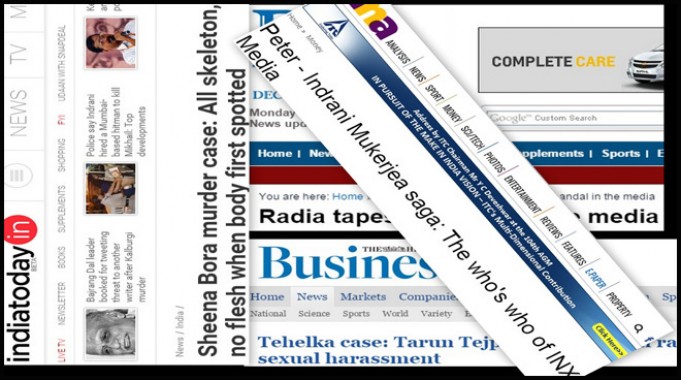Kid glove treatment for one’s own
The Sheena Bora murder case gets curiouser and murkier by the day with fresh revelations and angles tumbling out by the minute. Media moguls like Indrani Mukerjea, arrested in connection with Bora’s murder and Peter Mukerjea, former CEO of Star India and promoter of INX Media, are in the media glare. The other dramatis personae are Indrani's ex-husband Sanjeev Khanna, her former driver Shyam Rai, Sheena's brother Mikhail, and Peter Mukerjea's son Rahul Mukerjea with whom Sheena had an affair. This surfeit of personalities and angles prompted the author of this article to jest that Indrani and Peter Mukerjea are robbing the Indian elite of sleep.
On a serious note, Indrani had floated a slew of companies between 2006 and 2009, some of which are in the process of being shut down while others have been named in a draft Serious Fraud Investigation Office probe report.
"Seven companies associated with the media and entertainment sector were part of Indrani’s portfolio. These were 9X Media, Direct News Pvt Ltd, Saraswathi Media, Indrani Mukerjea News, INX Music, ABC Movies and INX Productions. Her longest stint was on the board of 9X Media, which she joined in August 2006, four years into her marriage with the STAR India CEO," according to this article.
The media seems to have gone into overdrive while covering this 'murder most foul' with the story apparently capable of putting 'any Bollywood potboiler to shame'. Along with the details of the murder, however, some unsavoury financial aspects of the Mukerjea couple are also tumbling out into the public domain.
For instance, INX Media received funding from 'Singapore-based Temasek, followed by Kotak Equity Fund, New Vernon, and New Silk Route'. Acording to a report in DNA "Temasek decided to audit the company in 2009 when it was running huge losses, and found that the co-founder couple had syphoned off huge sums of money. In 2007, the Mukerjeas sold 30% of their stake to the private equity players and exited the business."
Don't such revelations amount to letting down Indian readers/viewers in that they raise questions about the ethics of the media which are neither probed nor answered? There have been other episodes in the past where promoters, editors, or journalists have themselves become the news for the wrong reasons and whose conduct has occasioned some doubts about the media’s practices and standards of propriety.
Not so long ago, two top journalists put in their papers at the Mail Today and the Hindustan Times after they were named in a public interest litigation related to the Essar Group which allegedly cultivated people in positions of power by showering them with favours to forward its business interests. The resignations came after the Indian Express reported that a "whistleblower had leaked the internal communications of the Essar Group, showing how the company had plied politicians and journalists with favours and gifts in the hope of quid pro quos’.
Then, of course, there was the Niira Radia scandal which caused a huge uproar across the country and had the reputations of at least three top journalists on the line, triggering outrage over the seemingly cosy relationship between the media and corporate lobbyists like Radia.
While allegations were raised over transgressing the line between legitimate news gathering, lobbying, and influence peddling, most Indian newspapers and TV channels did not cover the Radia tapes at all, perhaps because of the large number of journalists involved in the controversy.
While the Essar Group and Niira Radia cases both involved the corporate world and journalists, the Tarun Tejpal case where the Tehelka (a brand famed for being associated with intrepid journalism) founder and former editor was charged with rape and sexual harassment, badly affected the credibility of an iconic brand of journalism.
All these examples show that every time powerful media personalities or owners are themselves in the news, all the searching and rigorous questions that should be asked about the media are not asked. When the dust has settled on the Sheena Bora murder case and the media have moved on to the next big story, we will continue reading the same 'tainted' newspapers and watching the same 'tainted' TV channels until the next incident involving the dubious practices of a media baron or personality…and so on and so forth.
Is this because we lack choices and options? Don't we deserve better? Are we silly to expect that those involved with 'tainted' media properties should learn from these episodes and rectify their ways? There cannot be better standards of transparency, accountability or ethics in the media until at least some of the issues raised by these incidents are addressed.
Anindya Rai Verman is an independent Delhi-based journalist and writer. Contact him: arv.edit@gmail.com







